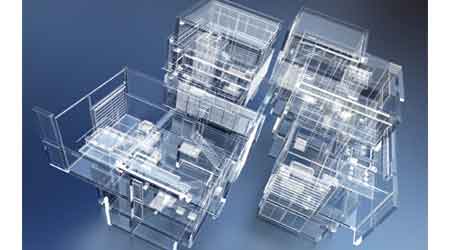Big Data Helping BAS Operate at Peak Performance
Last of a 4-part article on FMs staying up with BAS options to ensure their buildings are '2025-ready'
BAS platforms today are becoming very intelligent and are highly configurable. Designing and configuring these systems requires a thorough understanding of the dynamics surrounding the intelligent building, and how the technology can best be applied to deliver the optimal returns on investment. This is where “Big Data” comes to the forefront. The term Big Data is used when the sheer volume of data to be processed is so large that traditional data processing applications are inadequate. Computer programs today take this data and turn it into usable referential data that BAS can interpret and that can be used to configure the BAS to operate at peak performance. Modern building automation systems and platforms are continuously producing performance data, allowing the operators to adjust settings or allowing the system to automatically adjust settings based upon the current conditions and intelligent control algorithms.
For example, let’s assume a building has its electrical and hydronic energy usage monitored by a cloud-based analytic application. The analytical software is constantly reviewing and comparing the current conditions of the building to its historical data, and the massive amount of data available, to ensure that the systems and services are operating as expected. If it detects that the building’s energy use or carbon footprint has increased and has identified one or more air handling or hydronic control systems hunting and overshooting the control loops, flags will be raised that indicate tuning or adjustment will be required to correct the condition. The building analytics software will send a BAS response-reaction-effect correction command to trigger possible automatic adjustment of the controls software or alert the BAS operating personnel, who will in turn fix the issue in the field.
This example can apply also to other low-voltage building automation systems such as lighting controls and elevators. If all automated low-voltage systems are converged on a single IT network, then using off-site cloud-based applications simplifies the management of the platforms. Converged operations can also lead to a streamlining of operating personnel required to manage the building efficiently. This includes IT, mechanical, electrical, and BAS operating and maintenance personnel. The cause and effect becomes far less departmentalized when converged building automation technology teams up with IoT and cloud technology.
Implementation of a converged-technology BAS design can also create a smart technology backbone for high performance and sustainable green buildings. A sustainable building design solution requires continuous access to dynamic performance data to remain sustainable. An intelligent BAS design can help keep the high-performance HVAC systems operating as originally intended, well after the designers, construction team, BAS engineer, and commissioning agent are gone. Building performance and energy use data in dashboard format can be made available on building displays, including management and user workstations and building touch-screen lobby displays. Building owners and facility managers are very proud of their sustainably designed building performances today and are generally happy to advertise their lower impact on the environment. Occupants of many buildings will often make small individual energy efficient choices to reduce building energy use and carbon footprint when energy performance is visibly advertised.
How can a building be designed to be “2025-ready”? The design and construction teams — architects, engineers, construction management, IT, commissioning agents, and BAS providers — must work in concert with the building owner and facility manager and address the question of how the building will be operated and maintained. In those conversations, BAS designers and system providers should help building owners and facility managers understand current BAS technology choices as well as options that are on the way. The proper mix of smart technology needs to custom-fit the building’s intended use so that it will provide an environment that functions efficiently and sustainably. In doing so, it will provide an effective and efficient indoor environment, improving the health, well being, and productivity of its occupants.
Thomas Grimard is a building automation systems designer for Syska Hennessy Group. Kieran Long is an associate partner and technical manager with the firm.
Related Topics:











